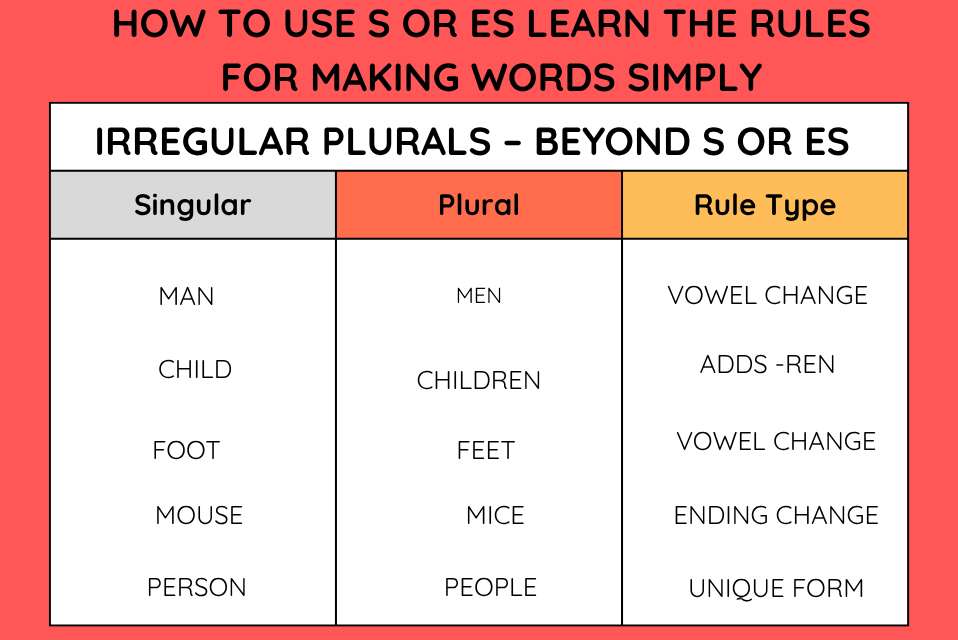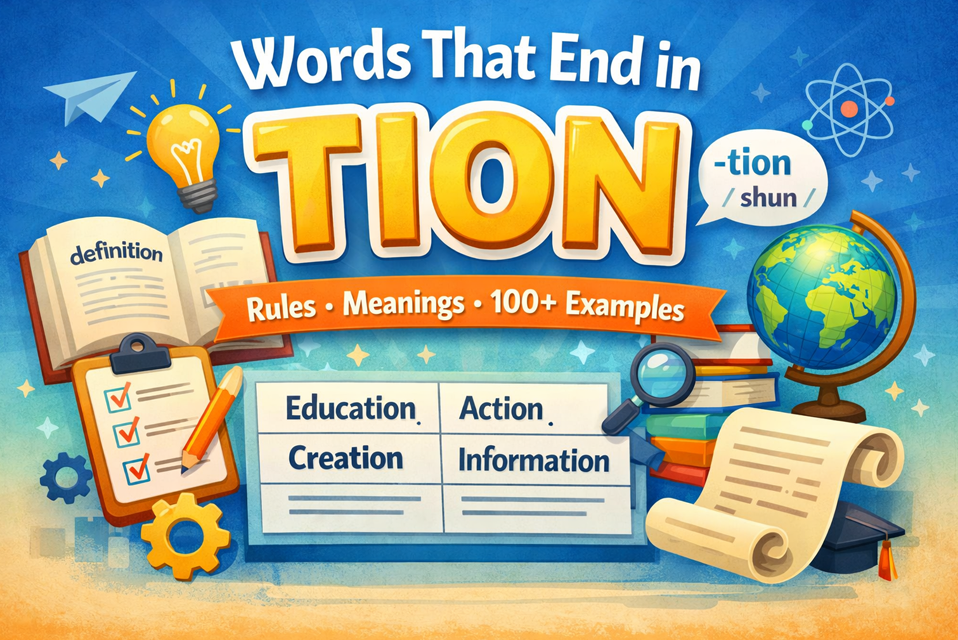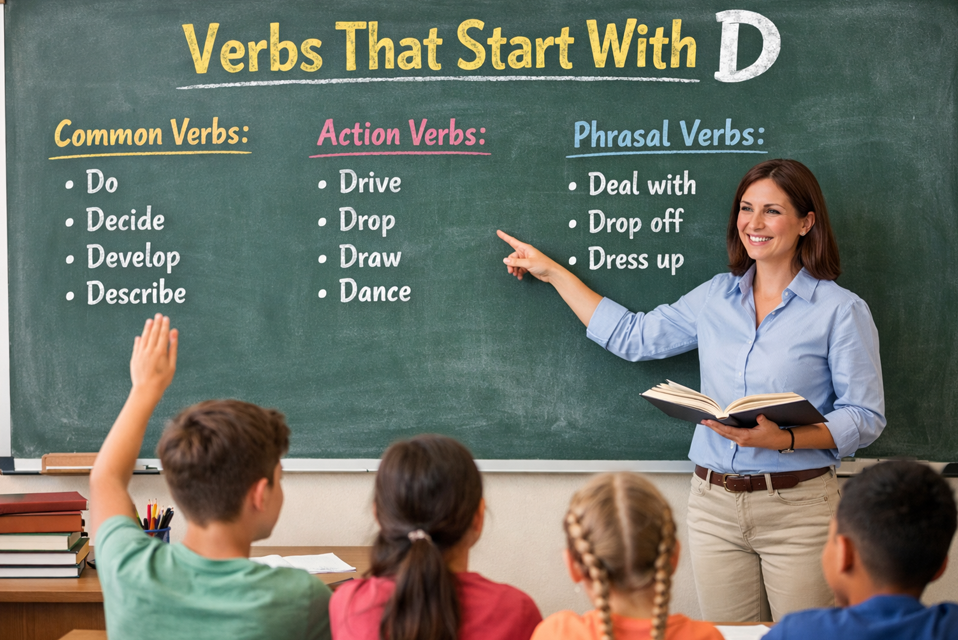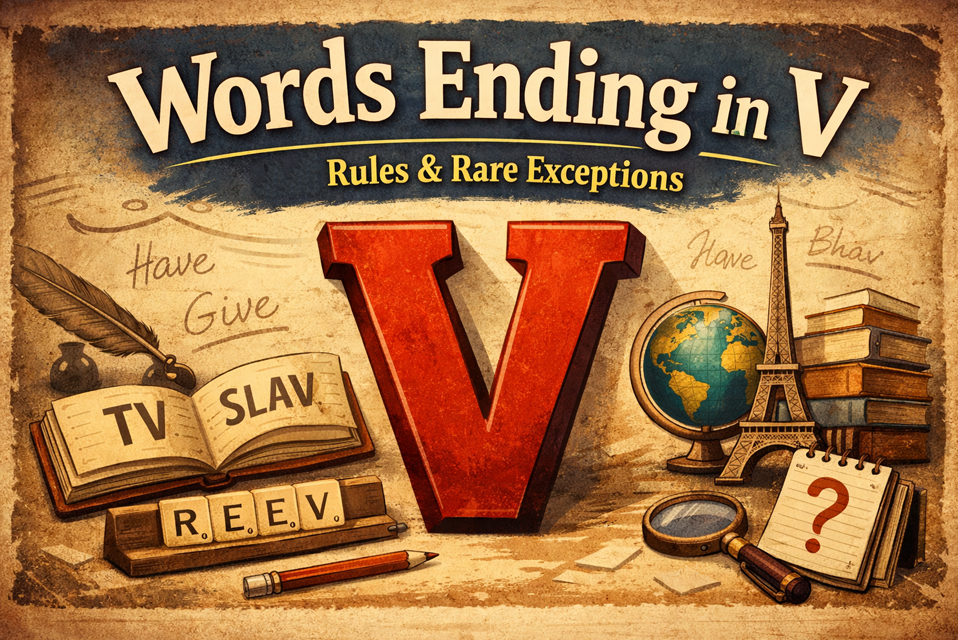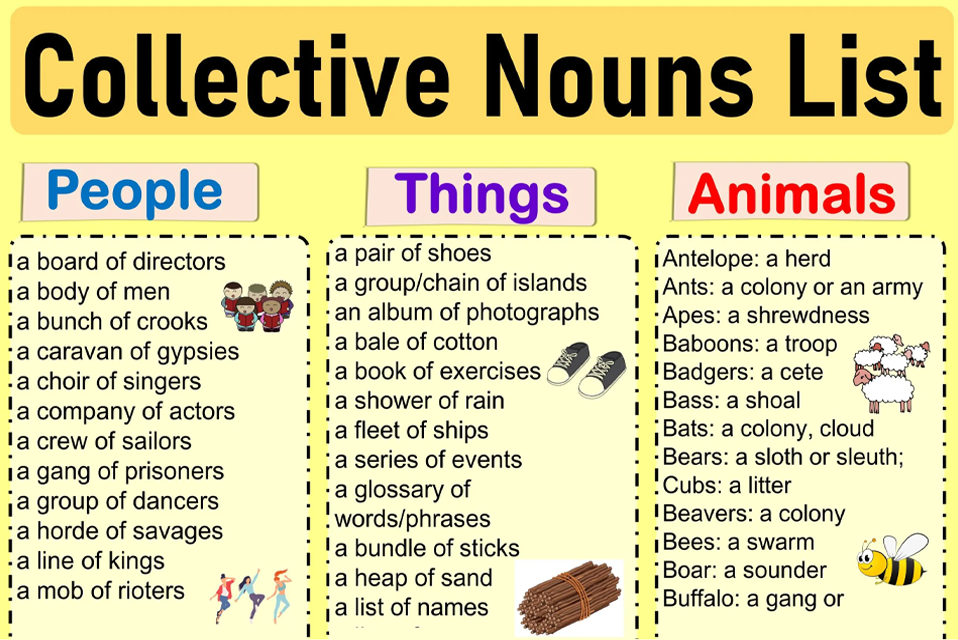Introduction
Have you ever hesitated before adding an ending to a word to make it plural? You’re not alone. English grammar has its fair share of quirks, and forming plurals is one of them. While adding “s” or “es” may seem easy at first glance, understanding when and why to use each is key to avoiding common mistakes. If you’re curious about typical pitfalls that learners face across grammar rules pluralization included check out our article on top grammar mistakes English learners make.
Rule 1: The Basic “S” Rule
For most English nouns, form the plural by simply adding “s.”
Examples:
- Book → books
- Cat → cats
- Apple → apples
This is the default rule and covers the majority of English words.
Rule 2: The “ES” Rule – When Pronunciation Requires It
If a noun ends in a hissing or sibilant sound, adding just “s” makes it hard to pronounce. To fix this, we add “es.”
Add “es” to nouns ending in:
- -s (Bus → buses)
- -ss (kiss → kisses)
- -sh (Dish → dishes)
- -ch (Watch → watches)
- -x (Box → boxes)
- -z (Quiz → quizzes)
According to Oxford English Grammar, this rule helps avoid awkward consonant clusters and improves pronunciation.
Rule 3: Words Ending in “Y” – Consonant or Vowel?
- If a consonant comes before the “y,” change the “y” to “i” and add “es.”
- Baby → babies
- City → cities
- If a vowel comes before the “y,” just add “s.”
- Boy → boys
- Key → keys
Tip: Listen to the letter before “y.” If it’s a vowel (a, e, i, o, u), the rule is simpler!
Rule 4: Words Ending in “O” – The Tricky Ones
There is no universal rule for these words, but a helpful pattern is:
- Traditional English words usually take “es.”
- Potato → potatoes
- Hero → heroes
- Imported or shortened words usually take just “s.”
- Photo → photos
- Piano → pianos
Source: Merriam-Webster Dictionary
Rule 5: Words Ending in “F” or “FE” – Change or Don’t Change?
- For many words, change “f” to “v” and add “es.”
- Leaf → leaves
- Knife → knives
- But some words just take an “s.”
- Roof → roofs
- Belief → beliefs
📌 These exceptions are best memorized. Most common ones follow the “v” change rule.
Irregular Plurals – Beyond S or ES
Some nouns have irregular plurals that don’t follow typical rules:
| Singular | Plural | Rule Type |
| man | men | vowel change |
| child | children | adds -ren |
| foot | feet | vowel change |
| mouse | mice | ending change |
| person | people | unique form |
hese need to be memorized, but they’re frequently used in English.
Invariable Nouns – No Change in Plural Form
Some nouns stay the same whether singular or plural:
- Sheep
- Deer
- Species
- Aircraft
Context is key! These words require no “s” or “es.”
Compound Nouns – Where Does the “S” Go?
Hyphenated or spaced compounds: pluralize the main noun.
- Sister-in-law → sisters-in-law
- Runner-up → runners-up
Closed compounds: add “s” at the end.
- Greenhouse → greenhouses
- Toothbrush → toothbrushes
Common Mistakes to Avoid
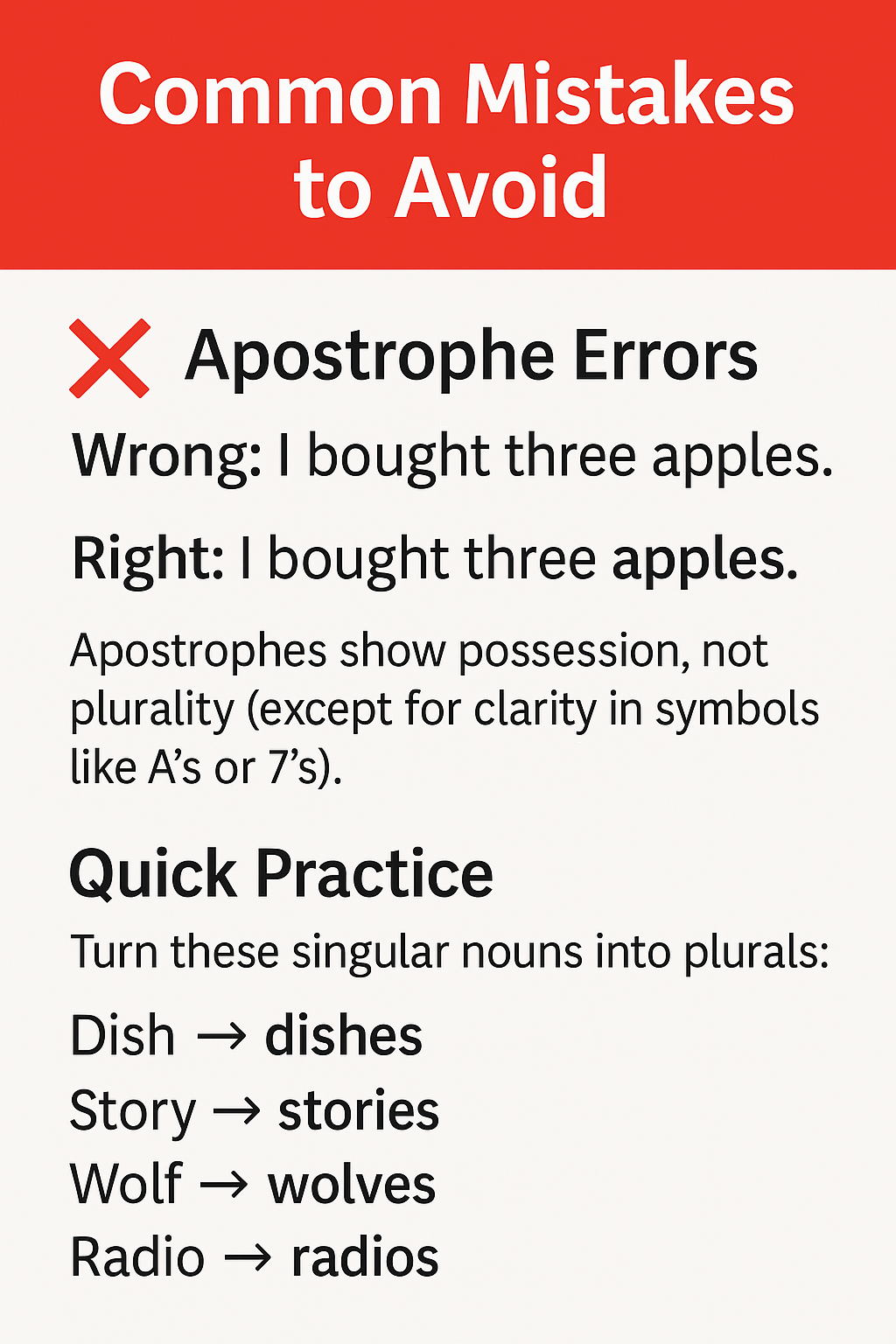
Apostrophe Errors
- Wrong: I bought three apple’s.
- Right: I bought three apples.
Apostrophes show possession, not plurality (except for clarity in symbols like A’s or 7’s).
Quick Practice
Turn these singular nouns into plurals:
- Dish → dishes
- Story → stories
- Wolf → wolves
- Radio → radios
More practice builds confidence!
Conclusion: S or ES?
By mastering these pluralization patterns:
- You’ll write with greater accuracy.
- Avoid common ESL spelling mistakes.
- Build confidence in both speaking and writing.
Even native speakers occasionally trip up so don’t worry if you need a refresher. Use this guide whenever in doubt!
FAQs: S or ES? Learn the Rules for Making Words
Q1: What is the general rule for pluralizing English nouns?
Add “s” to most nouns. Use “es” for endings in -s, -sh, -ch, -x, -z.
Q2: How do you handle words ending in Y?
Consonant + y → “ies” (baby → babies), Vowel + y → “s” (boy → boys)
Q3: Which words ending in O take “es”?
Potato → potatoes, tomato → tomatoes. Words like photo/piano → just “s.”
